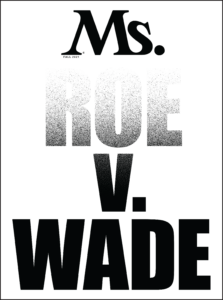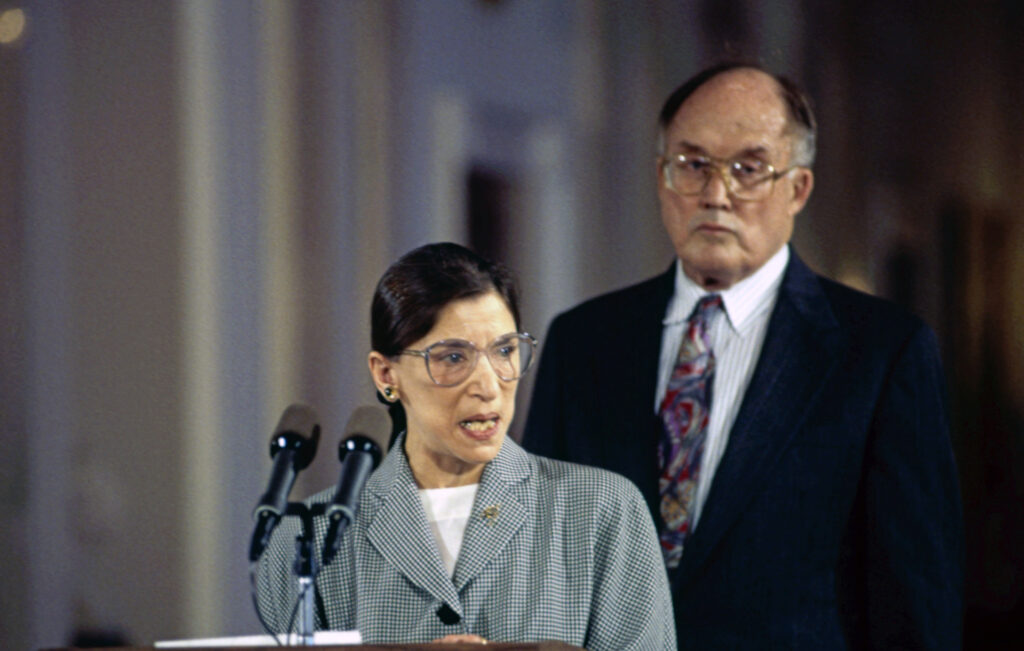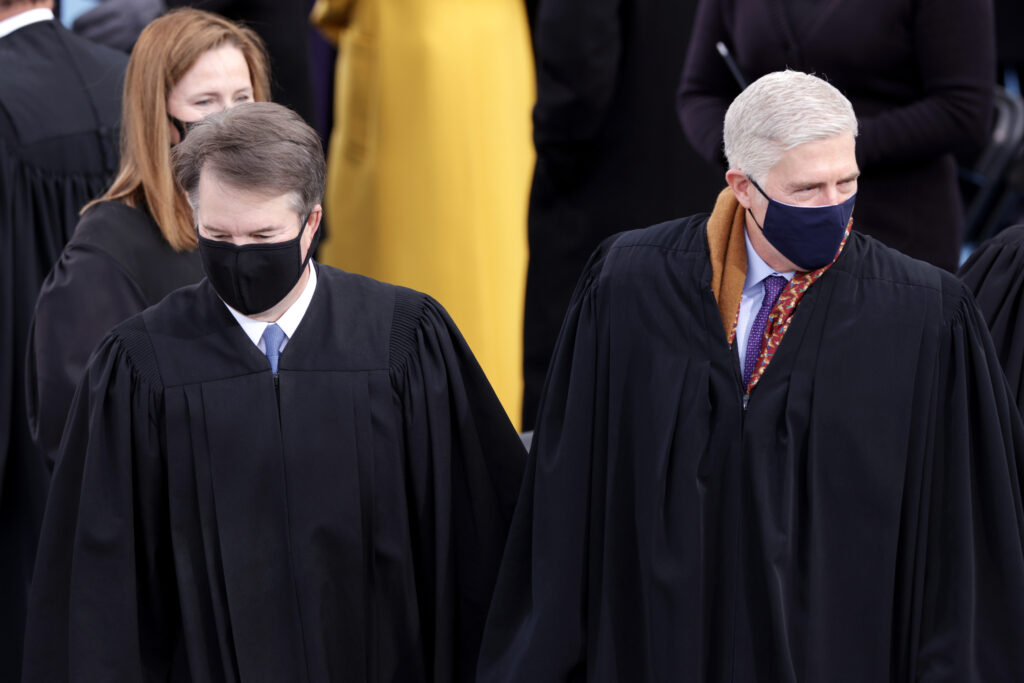There are many reasons to fight for the Equal Rights Amendment. Brzonkala’s case offers a particularly poignant one.

When she was a college freshman in 1994, Christy Brzonkala says she was gang-raped by two students on the Virginia Tech campus in Blacksburg, Va., 30 minutes after she met them.
Months after the alleged rape, she says one of her assailants announced in the dorm’s dining room that he “like[d] to get girls drunk and fuck the shit out of them.” This same man also admitted at the school hearing that he had sex with Brzonkala (he claimed it was consensual, though she’d said no twice)—but ultimately the school didn’t discipline him. The other alleged assailant was never prosecuted at all.
Distraught, Brzonkala attempted suicide and then dropped out of school. In 1995, Virginia Tech allowed the man who’d been prosecuted (both were athletes on the football team) to return to class.
After a Richmond grand jury refused to indict her alleged assailants, Brzonkala turned to a law newly passed in 1994 called the Violence Against Women Act. That law allowed survivors a civil rights remedy to sue their assailants for gender-based violence in civil court—to achieve some measure of legal accountability when officials disbelieved the allegations or took no action.
Brzonkala’s alleged assailants argued that the new law was unconstitutional, that Congress had no power to pass it. Almost every court to hear their constitutional claim rejected it until the case reached the Supreme Court where, in 2000, women’s right to equal protection from violence died in the case United States v. Morrison. (Antonio Morrison was one of Brzonkala’s alleged rapists.)
There are many reasons to fight for an Equal Rights Amendment to the Constitution. But Brzonkala’s case offers a particularly poignant one. As the late Justice Antonin Scalia once explained: “Certainly the Constitution does not require discrimination on the basis of sex. The only issue is whether it prohibits it. It doesn’t. Nobody ever thought that that’s what it meant.
“Nobody ever voted for that,” the famously conservative justice said, adding, “If the current society wants to outlaw discrimination by sex, hey we have things called legislatures, and they enact things called laws.” But here’s the rub: That might work if Congress had the constitutional power to enact laws against gender violence. The Morrison decision holds that the Constitution bars Congress from passing such a law. That could all change with the adoption of the Equal Rights Amendment.
The Supreme Court v. VAWA
The Violence Against Women Act, passed 27 years ago, did many things—but its sponsor, then-Sen. Joe Biden (whom I worked for at the time), believed that the civil rights remedy was the heart of it.
To see how big a deal that was, consider Harvey Weinstein, who was sentenced to 23 years in prison for rape and sexual assault, and was alleged to have assaulted dozens of women over decades. No federal law allows his victims to sue him for gender-based violence.
Title VII of the Civil Rights Act, which prohibits sex discrimination in employment, though well-known, is quite limited. It gives some people a right to sue for sexual harassment—but only in some situations. If you are not an employee, you have no right under the law. (Many of Weinstein’s victims, for example, were looking for jobs—they did not have them.) And even when the survivors are employees, the law does not cover sexual assault that occurs outside of the workplace (a much larger problem) and allows lawsuits only against employers with more than 15 workers.
The latter rule leads to tremendous racial and age disparities: Women who are “at will” workers (think: restaurant servers) or work in small businesses (think: childcare) are disproportionately young and women of color. They are not covered at all by Title VII and can be harassed and assaulted with impunity—their principal recourse a criminal justice system that has traditionally ignored these wrongs. There was, and still is, a very big gap in the law of gender-based violence. VAWA’s civil rights remedy aimed to close it.
But the Supreme Court ruled in Morrison that Congress had no power to protect women from violence because crime is a matter for the states. It did not appear to matter to the justices that state criminal prosecutions for sexual assault were rare, then and now. The Morrison decision announced grand principles of federalism (deference to the states), but its history carried the stench of racism and judicial power politics. Its author, Chief Justice William Rehnquist, had spearheaded a lobbying effort against VAWA’s civil rights remedy trying to prevent it from passing.

This article originally appears in the Fall 2021 issue of Ms. Become a member today to read more reporting like this in print and through our app.
Per ethics rules, judges are not supposed to lobby at all, and certainly not on laws that they themselves will rule on. But the chief justice took a very public stand against the legislation, claiming it would flood the federal courts with “a whole host of millions of domestic relations disputes” and “be invoked as a bargaining tool within the context of divorce negotiations”—implying that women would lie about violence in divorce proceedings. After his very public lobbying efforts, Rehnquist held the remedy unconstitutional, writing an opinion that equated sexual violence with what high-powered, white-collar lawyers viewed as relatively trivial legal matters of family law—marriage and divorce—and thus beneath the attention of federal authorities.
Congress needed to intervene because the states had failed to protect women. The problem was structural: The system was set up to make it difficult for anyone, prosecutors or survivors, to hold assailants to account.
The Morrison decision largely avoided talking about gender equality—the very reason Congress had passed the civil rights remedy. The Senate Judiciary Committee, which proposed the law, noted that criminal prosecutions for gender violence were rare and that there was pervasive gender bias in state law and in the criminal and civil justice systems. Congress needed to intervene because the states had failed to protect women. The problem was structural: The system was set up to make it difficult for anyone, prosecutors or survivors, to hold assailants to account.
None of these well-known facts mattered enough to the Supreme Court majority who decided Morrison.
But What About the 14th Amendment?
For years, critics have claimed that women don’t need the ERA because the Supreme Court has secured women’s rights under the 14th Amendment’s Equal Protection Clause. Morrison proves this protection is partial at best.
At the time it was ratified in the 19th century, no one thought that the 14th Amendment protected women; its purpose was to end slavery. Thanks to pioneering lawsuits by Ruth Bader Ginsburg in the 1970s, women did gain a measure of equal rights under the 14th Amendment, but lawyers know that those victories were limited.

After the Civil War, the Supreme Court cut back on the meaning of equality under the 14th Amendment, creating a series of precedents that would support segregation in the South for almost a hundred years. As a result of these rulings, Black Americans could sue to declare a law unconstitutional or a state official’s actions unconstitutional, but private individuals and entities were not covered under the amendment. Segregated businesses and water fountains and even lynching could flourish if conducted by “private actors.”
To pass the 1964 Civil Rights Act (which includes Title VII), Congress had to work around those 19th-century apartheid-supporting precedents. Congress claimed the power to end segregation under an entirely different part of the Constitution: the Commerce Clause.
It was not a particularly satisfying fiction. Why should your right to equality depend upon whether you were at work (the prototypical “commercial” activity that Congress may regulate)? Sexual harassment and assault happen at parties and doctor’s visits and on gymnastics teams
In Morrison, however, the Supreme Court rejected even the “commerce” workaround. The justices drew a bright-line rule: Brzonkala’s rape was a crime, not commerce. That she had dropped out of school and suffered economic damage did not matter. That the school was a commercial activity also did not matter. That Congress had compiled (according to the dissent) a “mountain” of data showing that violence affected women’s job and educational opportunities did not matter. Congress did not have the power under the Commerce Clause.
And the 14th Amendment? The Morrison decision shut that down too, declaring there is no equal protection right to be free from gender violence. The Court explained:
“[T]he principle has become firmly embedded in our constitutional law that the action inhibited by the first section of the 14th Amendment is only such action as may fairly be said to be that of the States. That Amendment erects no shield against merely private conduct, however discriminatory or wrongful.”
The work done by Ginsburg focused on state laws that expressly discriminated—laws that, for instance, prohibited women from administering estates. Such laws were actions by the state.
Morrison was different: The question was whether Congress had the power to create a federal civil rights remedy based on states’ failure to act to remedy gender discrimination. Ironically, states’ failure to act was the entire point of the 14th Amendment—to protect Black people from lynching and apartheid during Reconstruction when state officials looked the other way.
The question was whether Congress had the power to create a federal civil rights remedy based on states’ failure to act to remedy gender discrimination. Ironically, states’ failure to act was the entire point of the 14th Amendment.
It was the Supreme Court, not Congress, that had narrowed the 14th Amendment in the civil rights cases. And as a result, Jim Crow flourished. When I went to law school, I was taught that these civil rights cases were a font of despair and evil: They sustained vicious anti-Black discrimination for nearly a century. In the 1970s, some members of the Supreme Court suggested that the cases should be overruled.
Yet in the year 2000, in Morrison, the Supreme Court revived them. Cases that reenslaved Black people in the 19th century were used to limit Congress’ power to free women from gender violence in the 21st. Private actors lynched: The 14th Amendment did not apply. Private actors raped: The 14th Amendment did not apply.
Private actors lynched: The 14th Amendment did not apply. Private actors raped: The 14th Amendment did not apply.
Of course, that logic is as tortured in the 21st century as it was in the 19th. Even Rehnquist recognized Brzonkala’s injury, writing, “If the allegations here are true, no civilized system of justice could fail to provide her a remedy for the conduct of respondent Morrison. But under our federal system that remedy must be provided by the Commonwealth of Virginia, and not by the United States.”
The problem with that approach, of course, was that state law was the problem, not the solution. Morrison’s logic—that Congress was not the proper lawmaker—depended upon the idea that women had a remedy for rape and sexual harassment under state criminal and civil law. Congress, and the mountain of evidence it collected, contended they did not.
Common sense suggests that the Court’s assumption was untrue then, and remains untrue today. If state laws were enough to deter such violence, why had it persisted over the length of the country’s history? Why did 19 million women post #MeToo on Twitter in one year, 17 years after Morrison was decided?
The answer lies in the fact that neither state criminal nor civil “tort” law was ever intended to ensure gender equality—both were created in eras in which women were legally invisible. State criminal law remains mired in assumptions that befit a barroom brawl but not a progression of sexual harassment or predation. Evidence rules bar the use of a “pattern” of evidence in many civil and criminal cases.
If state laws were enough to deter such violence, why had it persisted over the length of the country’s history? Why did 19 million women post #MeToo on Twitter in one year, 17 years after United States v. Morrison was decided?
Recent attempts by state legislatures to reform these laws, with particular focus on sexual harassment, may have made the situation worse.
Harassment law has always focused on the workplace, meaning that your rights start when you clock in and stop when you clock out. But most sexual assaults do not occur on the job. Some of the new laws, built partially on a harassment framework, mean that survivors face barriers depending on whether the assault took place at work, whether the business had enough employees, whether medical malpractice limits apply, whether worker’s compensation is the proper remedy, whether churches are immune from suit—not to mention confidentiality clauses that keep victims silent and arbitration agreements that keep the cases out of court.
Remember Harvey Weinstein? His victims ended up using the lesser-known civil version of a federal law known as RICO (Racketeer Influenced and Corrupt Organizations Act) meant to make it easier for prosecutors to sue organized crime.
ERA Now

Most gains in women’s rights have come not from the Supreme Court via the Constitution but from Congress via legislation. Laws like Title VII and Title IX were held constitutional based on the fiction that they were primarily about commerce or federal educational funding, not fundamental gender equality, and thus apply only at work or school. Outside of those contexts, women’s rights too often stop.
Since Morrison was decided, the Supreme Court has only become more conservative. Now six justices, including former President Donald Trump’s three appointments to the Court, believe in “originalism”: the theory that the meaning of the Constitution was fixed more than 200 years ago in 1787, when women were legally regarded as the property of their husbands and fathers.
If strictly applied, originalism would eradicate women’s progress and allow this Court to overturn all the decisions applying the 14th Amendment to women because no one thought women were included in the 14th Amendment at the time it was ratified. Forget about abortion. Under the originalism doctrine, states could pass laws that expressly discriminate based on sex, barring women from jobs and denying equal pay.
The ERA would block that move by placing the words sex and equality in the U.S. Constitution. Even originalists bow to the actual text of the Constitution.
Perhaps more important, the ERA would spark Congress to enact new laws on gender violence, including redrafting the VAWA civil rights remedy, and chart a path to overturn Morrison. It is long past time to add the ERA to the Constitution—to address this matter and right a constitutional wrong.
Up next:





